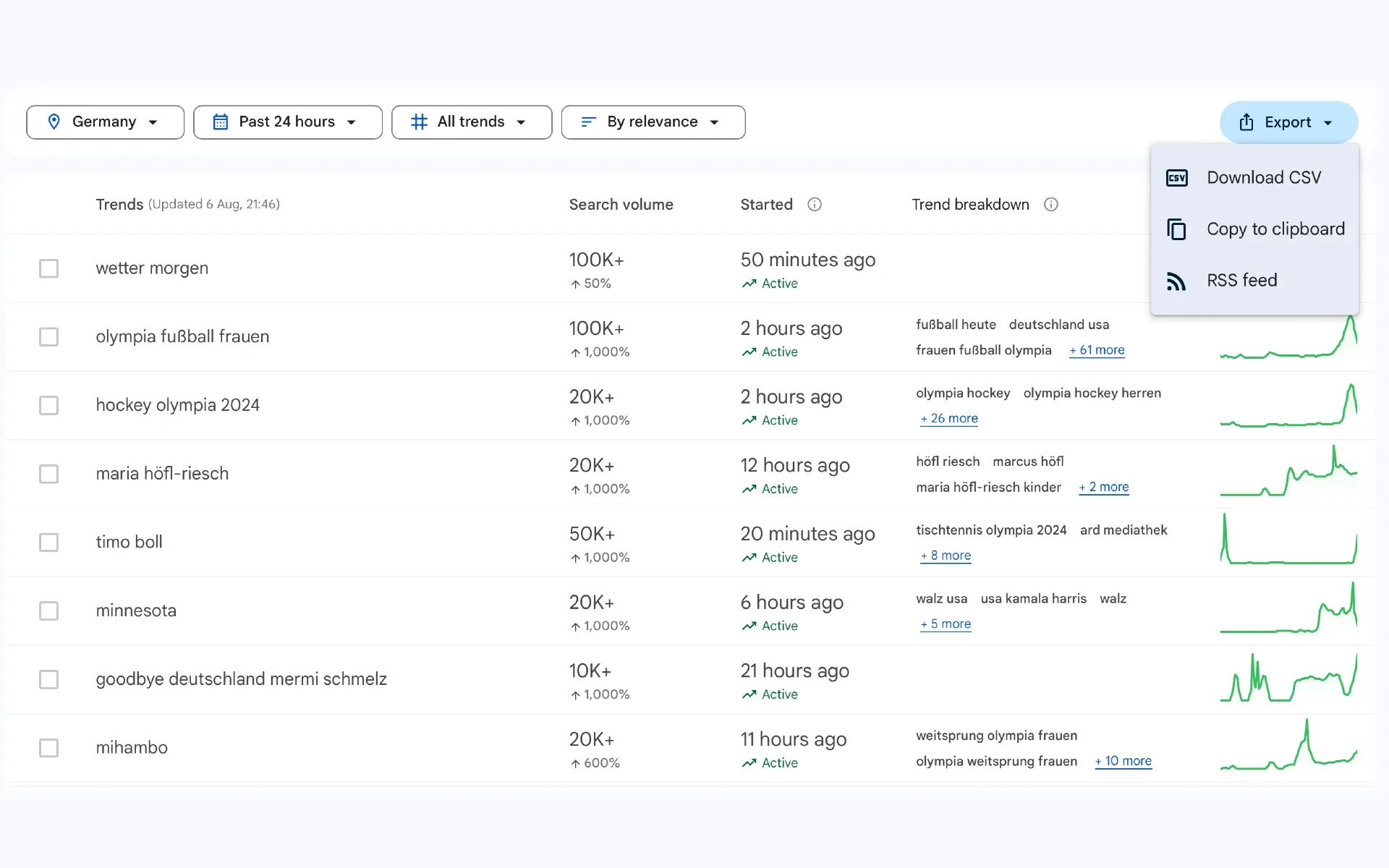Google Trends unveils redesigned Trending Now page with enhanced features
Google Trends introduces a revamped 'Trending Now' interface, offering improved filtering options and expanded keyword data.

Google Trends this month launched a significant redesign of its Trending Now page, introducing a host of new features and improvements to enhance user experience and data accessibility. The update marks a substantial shift in how users can interact with and analyze trending search data on the platform.
The redesigned Trending Now page offers users comprehensive filtering options, allowing for greater customization and specificity in trend analysis. According to Barry Schwartz, who reported on the update, users can now filter trends by country, time range, active trends, and relevance. This granular approach to data filtering enables researchers, marketers, and curious individuals to hone in on precisely the information they need, potentially uncovering more nuanced insights into search behavior.
In addition to enhanced filtering capabilities, the new design provides more keyword data on a single page. This consolidation of information streamlines the user experience, reducing the need to navigate between multiple pages or sections to gather related data points. The updated interface displays trends, search volume, trend inception times, and trend breakdowns in a more accessible format.
Google Trends, a tool that provides access to a sample of actual search requests made to Google, has long been a valuable resource for understanding public interest in various topics. The platform normalizes search data to facilitate comparisons between terms, dividing each data point by the total searches for a given geography and time range. This normalization process allows for a more accurate representation of relative popularity, preventing areas with the highest search volumes from consistently dominating the rankings.
It's important to note that while Google Trends offers insights into search behavior, it is not equivalent to polling data and should not be interpreted as such. The platform reflects search interest in particular topics rather than serving as a scientific measure of public opinion. A spike in searches for a specific topic does not necessarily indicate that the topic is popular or "winning," but rather that there is an increased interest in seeking information about it for various possible reasons.
The data provided by Google Trends comes from two main samples: real-time data covering the last seven days and non-real-time data that extends back to 2004 and up to 72 hours before a user's search. This sampling approach allows Google to process and present insights quickly while still offering a representative dataset of all Google searches.
One of the key features of the redesigned 'Trending Now' page is the ability to export data to CSV format, copy it to the clipboard, or access it via RSS feed. This functionality enhances the utility of Google Trends for professionals and researchers who may need to incorporate trend data into broader analyses or reports.
The update also appears to provide more context around trending topics. Users can now more easily access related articles and trending queries associated with each trend, offering a more comprehensive understanding of why certain topics are gaining traction in search.
It's worth noting that Google Trends data is subject to certain limitations and filters. The platform excludes searches made by very few people, duplicate searches from the same person over a short period, and queries containing special characters. These filters help maintain the integrity and relevance of the trend data presented.
The redesign of the 'Trending Now' page comes at a time when understanding real-time search behavior is increasingly crucial for businesses, researchers, and policymakers. In an era where information spreads rapidly and public interest can shift quickly, tools that provide insights into these dynamics are invaluable.
However, users of Google Trends should remain aware of its limitations. The platform's data should be considered as one data point among many when drawing conclusions about public interest or behavior. Additionally, Google Trends data can reflect irregular search activity, such as automated searches or queries associated with attempts to manipulate search results. While Google has mechanisms in place to detect and filter such activity, some of these searches may be retained in the data as a security measure.
As search behavior continues to evolve and the volume of online queries grows, updates to tools like Google Trends become increasingly important. This redesign represents Google's ongoing efforts to make search data more accessible and useful to a wide range of users, from casual observers to professional analysts.
Key Facts
Google Trends launched a redesigned 'Trending Now' page on August 6, 2024
The new design offers enhanced filtering options by country, time range, active trends, and relevance
More keyword data is now available on a single page, including trends, search volume, and trend breakdowns
Users can export data to CSV, clipboard, or RSS formats
The update provides easier access to related articles and trending queries for each trend
Google Trends data is normalized and sampled to provide representative insights into search behavior
The platform is not equivalent to polling data and has specific limitations and filters in place
This redesign aims to improve user experience and data accessibility in an era of rapidly changing information dynamics

